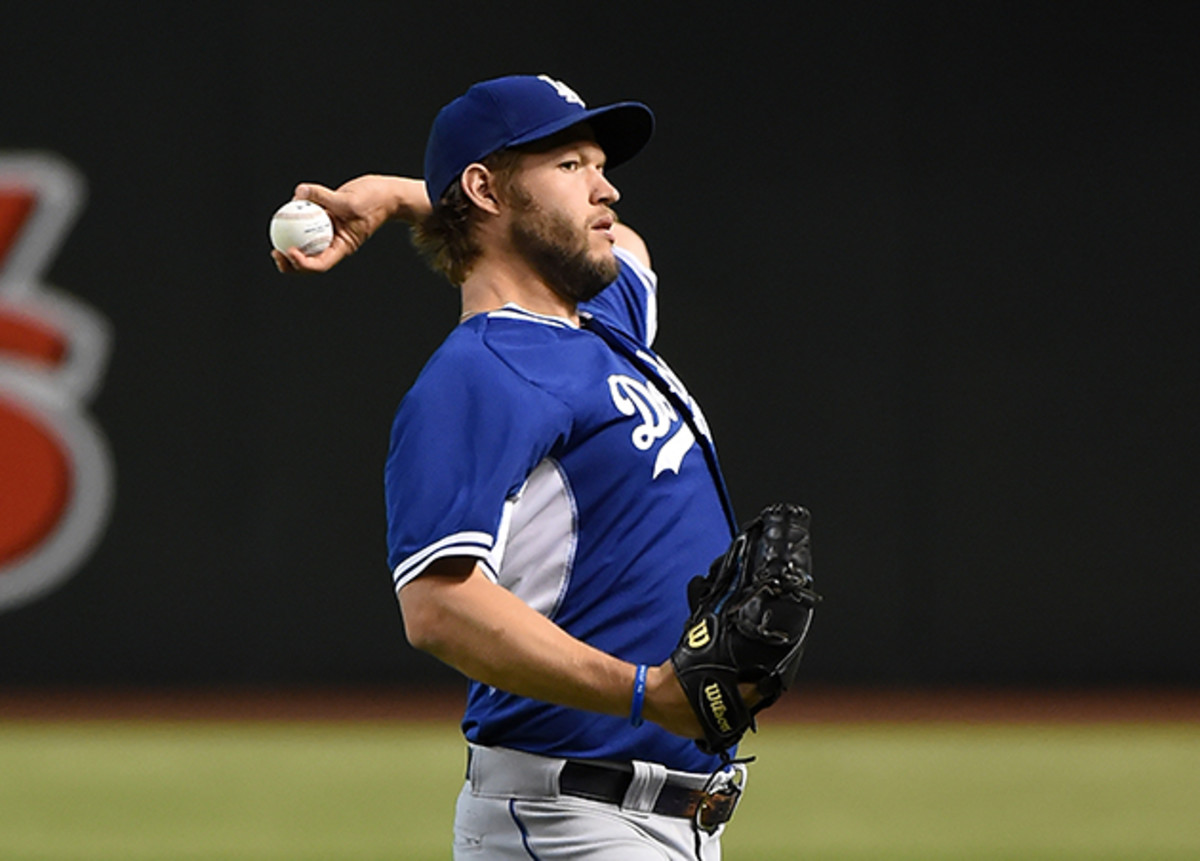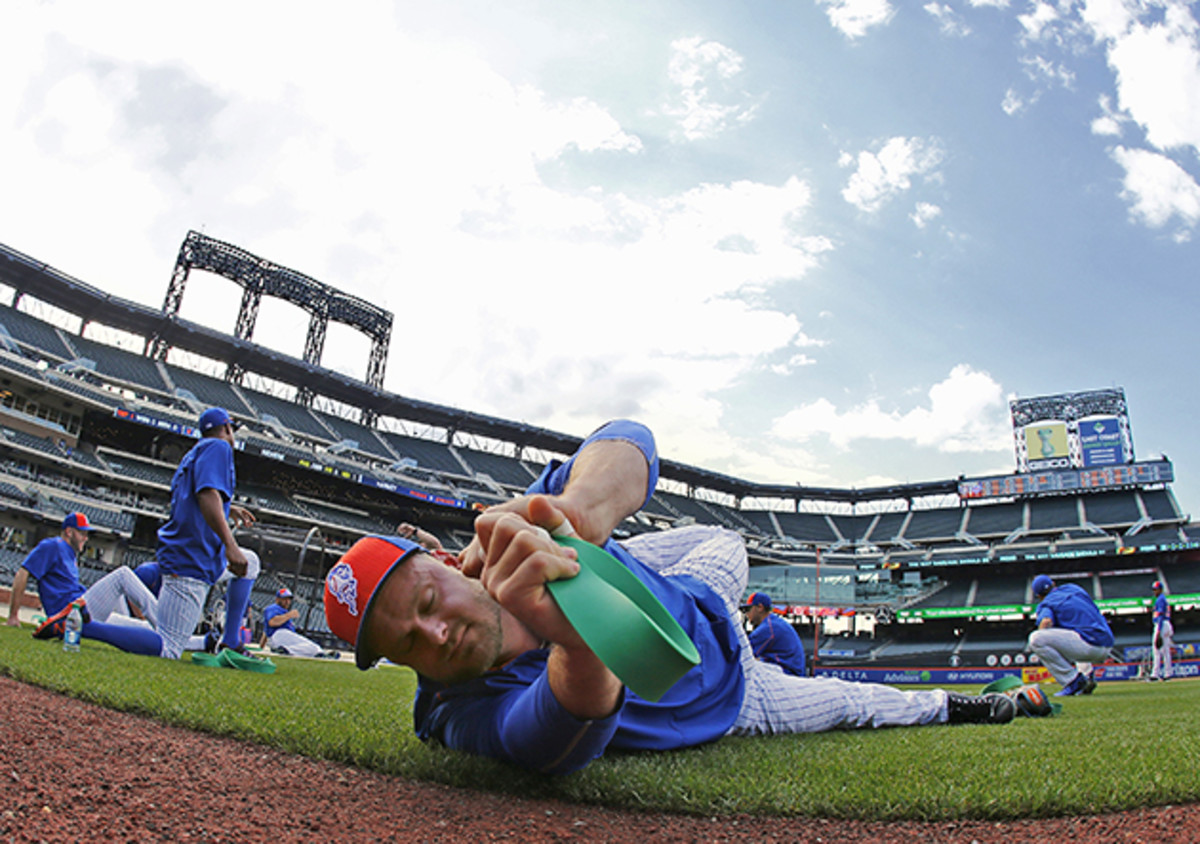Cricks and cracks: Why back injuries are on the rise in MLB

With the All-Star break in the rear view, baseball officially enters the dog days of summer. The next few months will decide which teams will play in October, but it’s the daily grind of games that often decides which nagging little problems turn into significant injuries.
The repeated twists, torques and dives of baseball make the lower back a weak spot for many. Several of the league’s biggest names are on the disabled list with back injuries, including Clayton Kershaw, David Wright, Lucas Duda and Trayce Thompson. For San Francisco Giants second baseman Joe Panik, his significant back injury cost him time out of the game, but he thinks he may be better for it.
The collision occurred on what Panik termed a routine double play against the Arizona Diamondbacks. The impact upended him on his hip, but the injury wasn’t considered to be serious. It was the resulting hip stiffness and soreness, says Giants’ head athletic trainer Dave Groeschner, that led Panik to alter his movements, creating an injury in another location: his lower back.

“When you limit range of motion in one area, another area of your body has to take some of that stress,” says Groeschner. “I think that’s what happened to Joe.”
Because he was playing well and thought the discomfort was simply part of the normal bumps and bruises of a long season, Panik toughed out the symptoms and didn’t seek treatment until more severe back pain began to affect his ability to swing and field groundballs. Ultimately, the collision started an injury process that forced the second baseman to miss a third of what was an All-Star season in the making.
• Throwing fastballs—not curveballs—linked to Tommy John surgery
Of course, the back pain club isn’t an exclusive one, it’s a common source of missed time in MLB—12% of all injuries are to the lower back. According to Dr. Joshua Dines, assistant team doctor for the New York Mets and the author of a recent review article on back injuries in professional baseball, these problems are all too common among baseball players, primarily for the reason that baseball places a great deal of stress on the spine.
“Swinging a bat is not a normal activity,” says Dines. Common problems for baseball players include disc injuries, muscle strains and stress fractures like Panik’s.

In fact, Dines estimates that the true incidence of back pain could actually be much higher, as the statistics reflect solely the injuries that result in missed playing time, omitting those lower severity aches and pains that resolve in a shorter period of time.
Baseball players are vulnerable to back injuries as both throwing and hitting require the spine to transmit energy from the legs to the upper body. Without adequate mobility and a strong and efficient core, those high stress motions can lead to injury.
“Players may only take ten swings in a game but there may be a 100 swings a day when you count those off a tee, in the cage and batting practice,” says Groeschner.
• New wearable neck collar could help reduce brain injuries in athletes
Hitting uses a combination of movements from both the upper and lower body that must be controlled and coordinated by the core and lower back. This powerful twisting motion, necessary to hit a baseball hard and far, requires a forceful rotation of the lower back along with the shoulders and hips.
As described in Dines’ article, during this rapid rotation, the spine and core are responsible for keeping everything together, ensuring that the hip and shoulder move in parallel throughout the swing. This essentially means that the spine and core are responsible for getting everything to the right place at the right time. If the shoulders don’t rotate enough, the bat won’t be in position to hit. But rotate too much and the batter’s ability to see the ball may be compromised. When mechanics are off and this precise synchronization isn’t achieved—especially when the flawed process is repeated hundreds of times—performance suffers and the likelihood of injury increases.

Pitching also necessitates a powerful rotation of the upper body, with the lower back and core muscles working to stabilize the entire body. Not surprisingly, poor core control was found to be a risk factor for back injury among MLB pitchers.
Though Panik’s injury began with a collision, it was the continued stresses of swinging and fielding that ultimately led to his back injury worsening. Groeschner believes it was the perfect storm of elements, “In Joe’s case all the factors were in play—fatigue leftover from spring training, playing every day in June and July, trauma around the bag, and trying to play through it.”
• Tae Bo’s creator Billy Blanks teaches to smaller audience with equal fervor
Once Panik’s back injury was identified, he went on the disabled list and the rehabilitation process began. Early on, it was basic exercise. “The first step was to get the back to loosen up, and after that, low level core work,” Groeschner says.

When Panik had healed enough to begin stability training, his core program focused on the glute and hip exercises that safely built strength without stressing Panik’s healing stress fracture. Although Panik’s injury was likely due to repeated stress layered on a more traumatic onset—not a lack of strength—regaining core stability and lower body flexibility was important to his recovery.
After a September attempt to come back from the injury ended with a return of the symptoms, Panik was shut down for the rest of the season. It wasn’t until the offseason that he was able to begin more functional baseball core training involving twisting and turning with bands and medicine balls.
• Training to failure: Myth or method to muscle mass and strength gains?
With the long hours, and in Panik’s case, weeks and months of the rehab process, only part of his recovery was physical. As with any injury, the psychological portion proved equally difficult.
“At first it was more mental, I was having a good year, we were in a pennant race with the Dodgers and you want to be out there with the guys, competing,” Panik says. “You’ve worked so hard, you feel like you’re letting the team down.”

For a young player that was experiencing his first trip to the disabled list, it was a hard lesson. “After a while, I understood that the only way I can help the guys is take care of my rehab.”
Of course, the psychological part of Panik’s recovery didn’t end when he was able to resume hitting, throwing and fielding. Regaining confidence in the injured area is part of the recovery and for Panik, this started with a very gradual progression back to hitting, the baseball activity that had caused the most discomfort. He credits Groeschner’s hitting progression in allowing him to regain the trust that his back would handle the stresses of swinging a bat against live pitching, something he didn’t do until this season’s spring training. “You’re almost waiting to feel that same discomfort again, but with each step you cross a mental hurdle,” says Panik.
• Behind the Body: How marathoner Desi Linden trains for 26.2 miles
For sports medicine experts like Dr. Dines, preventing back injuries in baseball players is a complex problem, often involving more than just keeping up on the core work.
For Panik, he admits he learned a great deal about his body from his injury and gained an appreciation for the value of prevention.
“When you’re younger it’s all about big biceps and how much you bench, but when you get to this level it’s about being healthy and staying on the field,” Panik says. “Now every day I’m in the training room maintaining my flexibility, activating my hips, doing core work.”
